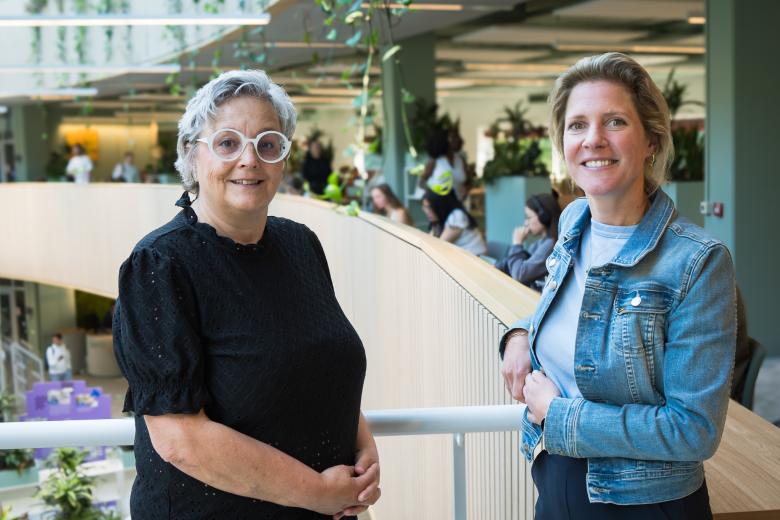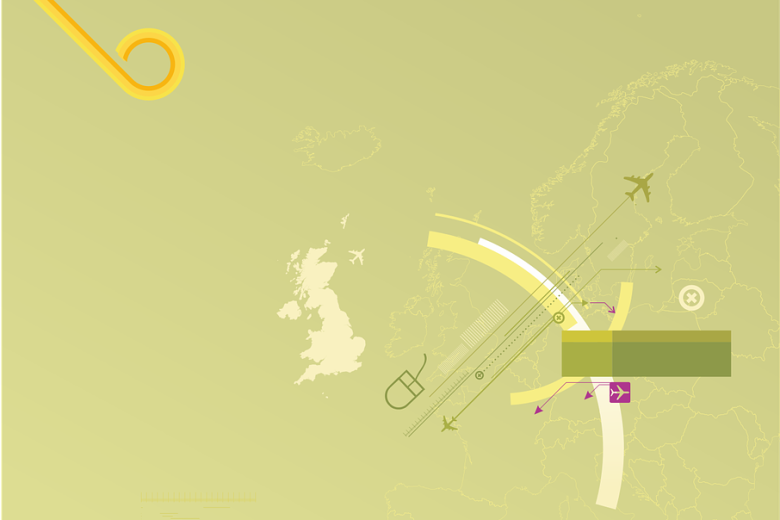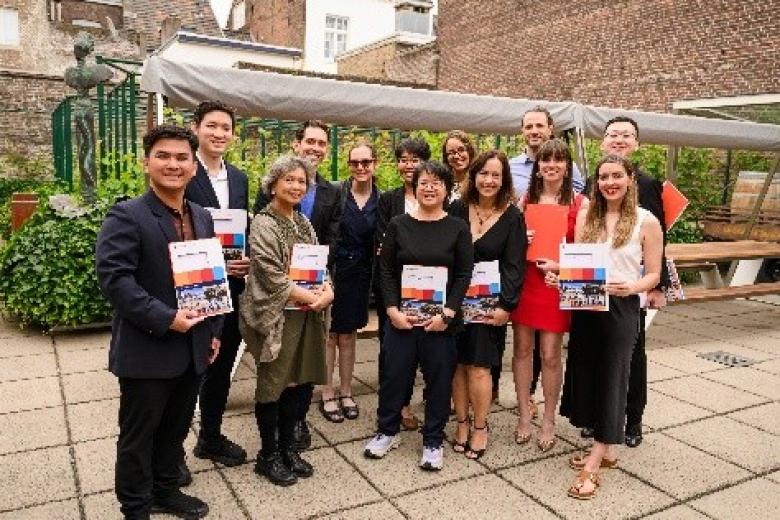Scientifically based ways to be happier
The new book ‘Happiness and optimism: A proven workable programme based on positive psychology’[1] from two Maastricht psychology researchers promises a happier life. The big difference from previously published self-help books is that the exercises in this book have been thoroughly researched. This is a conversation with one of the authors, Dr Madelon Peters, professor of Experimental Health Psychology at Maastricht University.
What is positive psychology exactly?
“It’s a relatively new branch of psychology that focuses on wellbeing; feeling good. Traditionally, psychology has paid a lot of attention to negative emotions, from which naturally many psychological problems arise. Positive emotions have been shown to make people more resilient, more open minded and ultimately happier. Optimistic people appear to have better physical and mental health, better social relationships and more success in work and study.”
How did you come to this field?
“My original field of study was pain research, for which positive psychology is one of the tools. Pain research often looks at suffering and fear, but there are also a lot of people with pain who can handle it very well. I was interested in learning about that resilience and how to foster that in others. Optimism seems to be an important factor for those people, which is how it all started.”
Why did you want to add a book to the shelf of self-help books in the bookstore?
“We’ve developed a programme at Maastricht University for people with chronic pain, based on positive psychology techniques. The goal was not to relieve the pain, which is often not possible, but to lead a good and happy life despite the pain. In a number of major scientific studies, we have shown that people who followed this seven-week programme at home felt less depressed and negative. They even felt a little happier than the people in the control group who had followed ‘normal’ cognitive behavioural therapy. When the publisher approached us to make this programme available to a broad audience through a book, I thought that was a great way for scientific research to benefit society.”
PhD defense Jantine Boselie
If you administer pain to test subjects (for example by asking them to put their hands in a bucket of ice cold water) and subsequently ask them to perform a memory task, they perform better when they are in a positive mood then when they are in a neutral mood. This is one of the most important findings of PhD candidate Jantine Boselie, who wrote her dissertation under the guidance of prof. Madelon Peters. She will be defending her dissertation entitled ‘Filling the Glass: optimism as a protective factor against pain-induced executive functioning impairments’ on 22 September. In her dissertation she demonstrates that there is a ‘significant interaction’ between pain and optimism.
So, it’s not just meant for people with chronic pain?
“No, because the exercises are not specific to pain. In positive psychology, there are dozens of exercises, which often have little scientific substantiation. In our programme and this book, there are only exercises that are scientifically well-substantiated. We’ve only researched the whole programme, so of all the exercises together, in people with chronic pain, but I can’t think of a reason why it wouldn’t work for other people. I would like to do further research on that.”
Is it a conscious choice to not give the book a typical self-help title, like ‘Seven weeks to greater happiness!’?
“The publisher thought of the title and I was pleased with it. I don’t like those screaming promises and the book also offers more than self-help exercises. The scientific foundation and the historical context of positive psychology techniques are also included. That makes it interesting to read, even if you don’t do the exercises. The latter is often the case—people buy this type of book and don’t actually do the work.”
What do people actually learn when doing the exercises in the book?
“There are four modules, which are about positive emotions and optimism. The first teaches you to develop more self-compassion, so if something goes wrong, you won’t get down on yourself but will remain understanding of yourself, as you would also do for a friend. The second teaches you to enjoy the little everyday things that happen to you and the third how to enhance these positive emotions. Finally, you learn to look forward to the future in a positive way.”
One of the exercises in the book is to describe three times that were fun or nice every day. I don’t think that's easy if you live in Syria or if you’re depressed, for example.
“Right. Happiness is not within everyone’s reach, sometimes because of external circumstances that you have no influence over. Also, the practice of writing about your ‘best possible self’, when in the future everything has gone in the best possible way, is therefore primarily intended for realistic, somewhat achievable goals. To start with, you have to be motivated to follow this type of programme for seven weeks and I suspect that people with severe depression are often not able to do that. If you have such a big problem, you need to seek professional help. A book like this is especially intended for people whose lives are going reasonably well and who want to be a little happier.”
Is it not important to accept, as the Belgian psychiatrist Dirk de Wachter says, that unhappiness is part of life?
“I definitely think that that’s also important in life. Things that can’t be changed must be accepted and it’s not for nothing that we say in the introduction that grief, anger or sadness can never be completely eliminated. But if there are opportunities to become a bit happier, for example by looking at the positive, why wouldn’t you take advantage of them? A marathon runner who has to stop doing what she’s passionate about because of back problems can learn to look at what she can still do in sports—or whatever else is positive in her life. It’s not an obligation, but rather a right to work on happiness.”
The studies on which this book is based will now be published; what are you currently investigating?
“Now it’s mostly about pain again. I want to know if exercises on optimism can help pain patients be more motivated during therapy and whether we can increase their positive expectations about the effects. And I want to know whether such exercises can affect their behaviour and functioning, in addition to their feelings.”
What about your own sense of happiness?
“By nature, I’m already optimistic, but since this research, I think more about my values and goals—how to set up my life. I’ve been working less. My happiness is not about performing and publishing, but socialising with the people around me.”
Happiness and Optimism, by Madelon Peters and Elke Smeets, is published by Nieuwezijds. ISBN number: 9789057124884
Three exercises to make you feel happier
- Take 10 minutes a day to write about three things that happened that day that were beautiful, fun or happy. Peters: “An alternative is to talk to your family members about it each day, because if you share positive emotions, they’re strengthened. In our scientific research, we only investigated the writing.”
- Write at least four days in a row for 10 minutes about what your life will look like in five or ten years, if everything is done in the best possible way. Peters: “When we analysed people’s stories, it became apparent that people who wrote more about ‘we’ than about ‘I’ or material things, benefited most from this exercise. I don’t think anyone can be happy on an island, surrounded only by things.”
- Think of a side of yourself about which you feel bad or insecure and an imaginary friend who supports you unconditionally. Now write a letter to yourself from that friend’s perspective. What would he or she write to remind you that you are only human and have strengths and weaknesses like everyone else? Peters: “Research shows that writing such a letter helps to boost happiness and reduce depression. You can pick it up again if you’re having difficulties.”
Also read
-
Randwyck Library and the river of knowledge
Monique Notermans and Meike Kerkhofs-Welkenhuizen witnessed the vision behind a modern library come to life.

-
M-EPLI PhD Research Spotlight on Blessing Eze
M-EPLI PhD researcher, Blessing Eze, is examining the role of private documents in regulating global value chains.

-
MHPE: Looking back and going forward
During the MHPE Campus Period last month we welcomed a new cohort of MHPE students and enjoyed seeing back those who are starting up their Master thesis projects. We are now preparing to hand over to a new MHPE Management Team that will take over on the 1st of September 2025.
